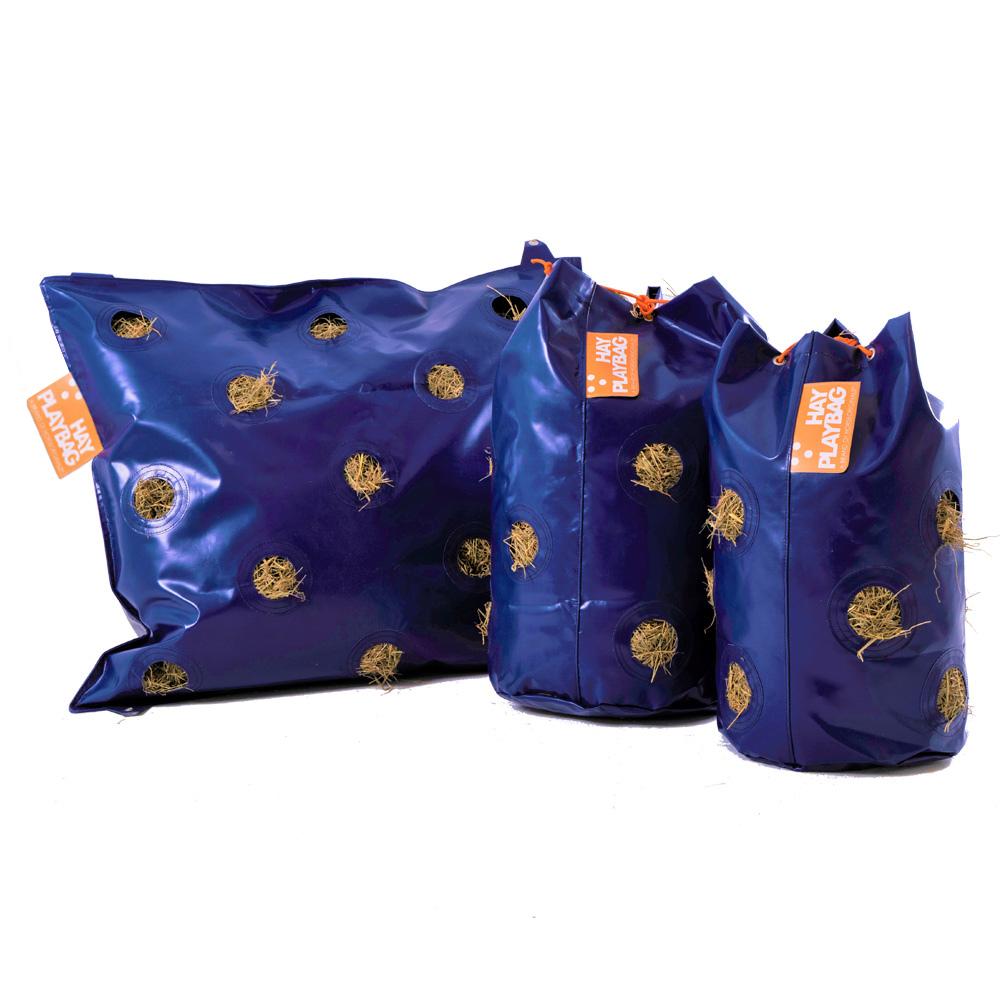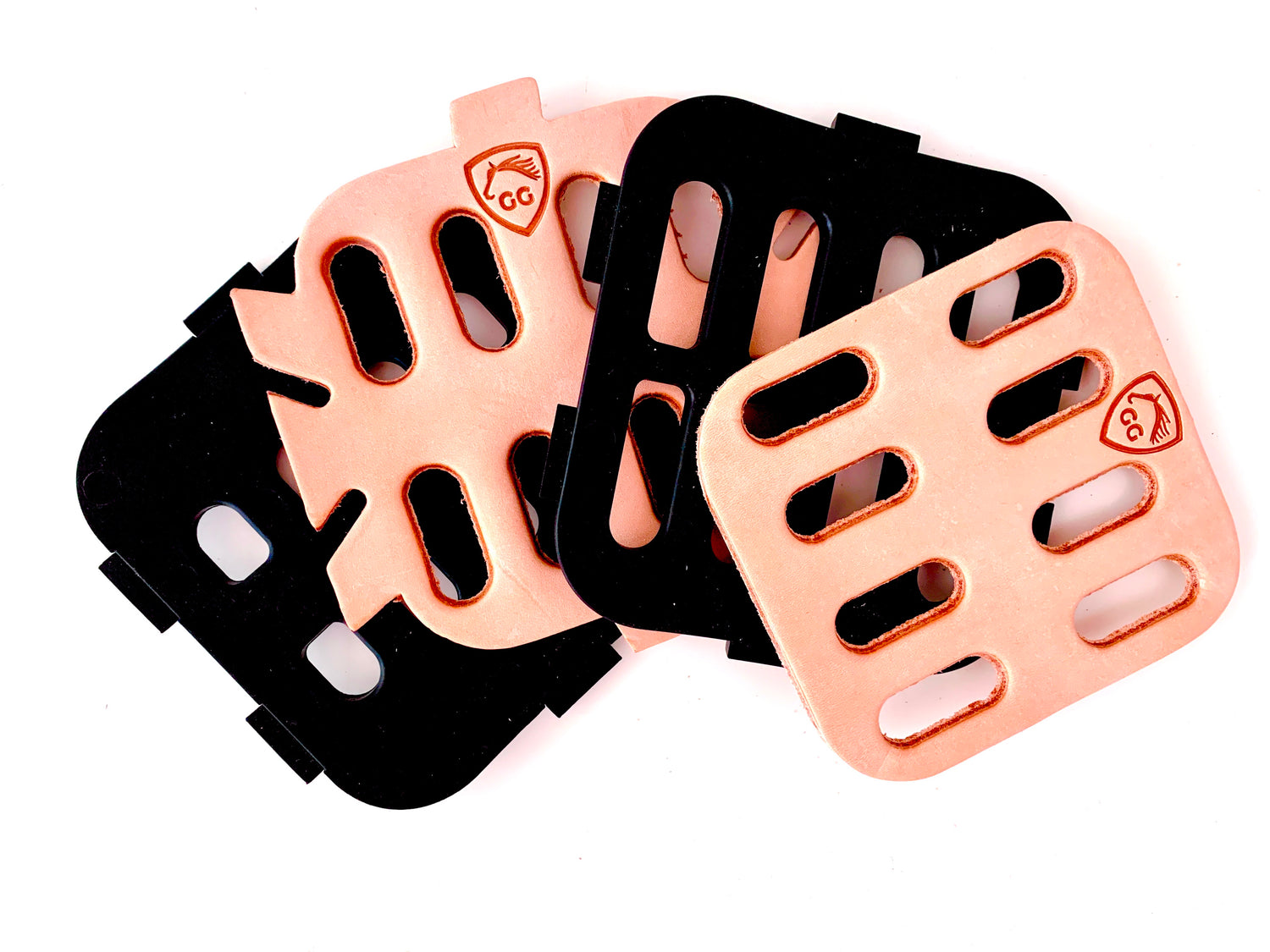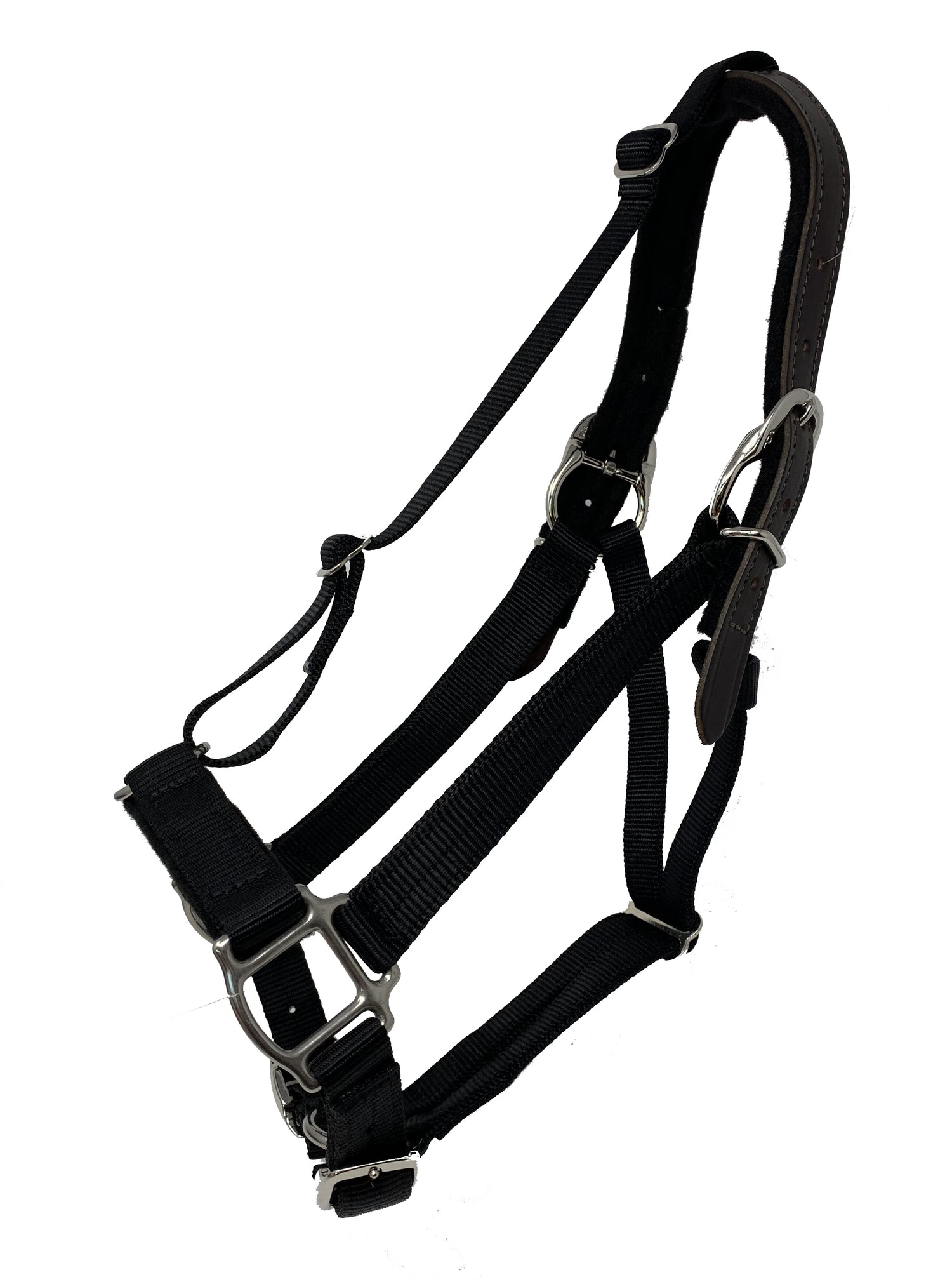Spring is around the corner, and we've got grazing muzzles on our minds. If you're like many horse owners, you may be unsure when to take your horse's muzzle back out after the winter season. Do you tie it to the calendar, or are there other signs to follow when starting grazing muzzle season? How do you know when to retrieve your horse's muzzle from the tack room?
Let's all admit right now that very few tack rooms are this well organized.
Every horse is different and has individual needs, so declaring a particular date for the start of grazing muzzle season is not proactive. So the question is less "What is the start date for muzzling?" and more "When do I start to muzzle my horse?" Either way, it's a tricky question! Some factors include your horse's body weight, laminitis and colic risk factors, the environment and climate, and your intentions with muzzling.
Help Reduce the Risk of Laminitis and Colic
The primary reason to stay alert during grazing muzzle season is to prevent laminitis and colic, which lush spring grass can trigger. A fat horse, or one with equine metabolic syndrome (EMS), insulin resistance (IR), or pituitary pars intermedia dysfunction (PPID, formerly known as Cushing's disease), has trouble regulating insulin.
Obesity, Insulin, and Metabolic Disorders
When sugars and starches interact with the hindgut's microbes, the activity in the gut creates gas, pH changes, and endotoxins if those microbes are allowed to feast. These changes can cause gas colic or laminitis as the pH changes create an environment that puts endotoxins into the blood, which travels to the hooves, triggering laminitis.
When a horse has a metabolic disorder, insulin dysregulation creates higher insulin levels, significantly contributing to laminitis and increasing the risk of sore hooves, laminitis, and equine founder.

Pasture that has gone to seed is extra sugary to keep those seeds viable.
How Grazing Muzzles Work
Regardless of metabolic status or other health issues, we want horses to have food available 24/7. Using slow feeders, like HayPlay bags, ensures your horse is eating small amounts for long periods.
Spring grass is growing wildly and using photosynthesis to make glucose to grow and reproduce. Those sugars are also delicious, and the grass is plentiful. The tasty sugars mean horses will likely gorge on this calorie-dense pasture for as long as allowed. This translates into weight gain and a higher risk of laminitis and colic.
The purpose of grazing muzzles
Any time your horse wears a muzzle, which is just a slow feeder that they wear, two things happen. First, they will eat slower and, second, less.
Slower, smaller volume eating is safer for every horse's hindgut. Slower eating is especially beneficial for overweight horses and those with metabolic issues, particularly when sugar levels increase in spring and autumn pastures.

Grazing muzzles are a wearable slow feeder!
Factors to Consider for Ponies and Horses
The best time to fit your horse's halter and grazing muzzle is before spring grass grows. But how do you decide when that is?
What are your pastures like?
Environmental factors can be the trickiest to monitor. Determining how your pasture fared over winter won't always equal the same pasture health in the spring. Staring at the grass to determine if it has grown an inch or looks greener than previously can lead to major headaches.
Your local agricultural extension service can give you fantastic information about the grasses in your paddocks. This data will give you an idea of the growing cycle, calories, sugar content, and more. Start muzzling before it grows.
Easy keepers vs. hard keepers
Rather than rely on your eyes' evidence, look to a more trustworthy source, like your weight tape. As grass becomes more lush, the calories add up.
It's essential to know your horse's metabolic status. Your veterinarian can do some easy bloodwork and analyze your horse's age, body condition score, and overall health to determine your horse's laminitis and colic risk factors.
Easy keepers
A fat horse is an easy keeper. Also known as an air fern, these guys have no problem keeping weight on, and may even gain weight at the first sign of fresh grass.
Not only is obesity in horses linked to EMS and IR, but it's also associated with additional wear and tear on joints, hooves, tendons, and ligaments. The extra weight will also hamper thermoregulation, making them more likely to overheat in the summer and winter.
Easy keepers need a weight loss plan that keeps nutrients, slows down eating, and is also low in sugars and starches. Cutting a horse's food intake can be dangerous, as their bodies can hoard the available calories and create even more metabolic issues. Slow feeders, plenty of low-calorie forage, and a steady stream of small amounts of food over many hours are best.

This horse could be pregnant, full of worms, extra fuzzy, or overweight. Your vet can help you gauge your horse's weight and health.
Hard keepers
If your horse is a hard keeper, they may still have metabolic issues that influence their risks. They need calories, but they should be low-sugar calories. A slow feeding plan helps them avoid ulcers and other troubles interfering with weight gain.
As spring grass starts to bloom, allowing free feeding of that lush grass is tempting. If your hard keeper has PPID (Cushing's disease), the increase in sugars will increase the risk of excessive insulin dysregulation, laminitis, and colic. If your hard keeper has a healthy metabolism, consider the new spring grass as a diet change that can upset their digestive system.
Both situations benefit from slow feeding. Slow feeders give their digestive systems a chance to catch up and adapt to the changing quality of the pasture grass.
An equine nutritionist is another expert who can help you design a proper diet of forage, feeds, and pasture for your horse to help them stay healthy.
Monitor Your Horse Daily
Daily tracking of your horse's health isn't exclusive to grazing muzzle season. Making a few fast checks part of your grooming routine can help track your horse's health.
Digestive health
Knowing your horse's bathroom habits and what their manure and urine look like helps you stay ahead of potential issues. You should know this about your horse's manure and urine output:
Color
Consistency
Volume
Location
Frequency
For example, any time you notice something unusual gives you data about how they feel, and what may be happening. Diarrhea or loose stool can lead to colic, dehydration, colitis, and skin scald and may occur during a change in pasture grass. Smaller, dry fecal balls indicate dehydration and can lead to impactions and constipation.

You can't tell from a horse's manure how much sugar and starch they eat.
Hoof health
Sore hooves are one sign that sugary pasture goes straight to the hooves. While many of us love warmer weather, we never like warm hooves, as they show increased blood flow and issues to come. Sore or warm hooves are technically a sign of sub-clinical laminitis, which means it's a case of mini-laminitis and doesn't always equal a full-blown episode.
Warm hooves may also mean your horse's hooves were sunbathing. You need to check the digital pulse to be sure. Checking your horse's digital pulses is a central part of a grooming routine. It takes a few seconds and is easy to combine with hoof picking.
How to check digital pulses:
Two digital pulses are on each leg, inside and outside the fetlocks.
Run your fingers down the tendons at the back of the legs. Using your first and middle fingers, follow the tendons as they wrap to the back and under the fetlock. Feel for a squishy spot. Rub your fingers back and forth, confirming that you feel some strings there. Those are the digital artery and vein.
Press down about halfway on this spot. If you feel almost nothing or nothing, this is normal. If you feel a strong or bounding pulse, that indicates there is inflammation in the hoof. The inflammation could be from an abscess, a hot nail, laminitis, a stone bruise, thrush, gravel, or any other hoof ailment.
Signs Your Horse is at a Higher Laminitis Risk
Ideally, your vet has done bloodwork to monitor your horse's metabolic status. If you notice any of these things, connect with your vet to reassess your horse's laminitis and colic risk.
- A cresty neck
- Strange fat pads
- Sore hooves after the farrier, grazing, or sugary commercial feeds
- Fluctuating digital pulses
- Weight gain (use a weight tape to track this!)
- Changes to manure
- Avoidance of hard surfaces
- A history of gas colic or laminitis
Read more about the signs of laminitis here.

How Long is Grazing Muzzle Season?
Grazing muzzle season could be a few weeks long for the horse needing a slow transition to rich grass in the spring and fall. For higher-risk horses or obese horses, all pasture access needs a muzzle.
Occasionally, pasture is never appropriate for a horse's health. However, using HayPlay slow feeders will help keep your horse nibbling on forage all day long to mimic the time they would spend in turnout grazing.
Your vet will be able to provide valuable input for making these decisions as well.
Can I skip the muzzle and make turnout time shorter?
The amount of time grazing is less significant than how fast a horse or pony can eat. The trouble comes not from how long they graze but from how much and how quickly sugary grass enters the hindgut.
If a horse has partial time wearing a muzzle and partial time "naked," they learn that grass intake without using a grazing muzzle is the time to gorge and will eat more. Slowing the eating gives the hindgut more to digest, making that cycle of pH change and endotoxins hitting the bloodstream riskier.
When you limit pasture intake by limiting time, you increase risk and limit other beneficial horse behaviors like play, movement, and interactions with the herd.
Horses do best when slow and steady is the rule of thumb.
Scoring your horse's neck can help determine how much weight they're carrying.
------
Sarah Borns is a lawyer and former barn manager. She has a beautiful Welsh-Thoroughbred cross named Haley.
------







